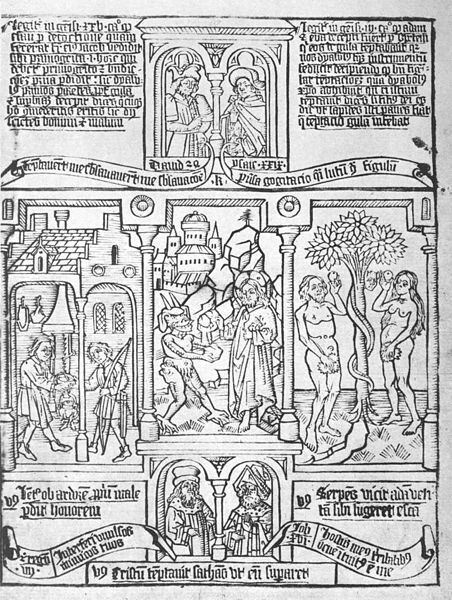The notions covered in this concept sheet go beyond those seen in secondary school. It is intended as a supplement for those who are curious to find out more.
The feudal system is the form of social organisation associated with the medieval period. Feudalism was mainly practised in rural areas. This is why this form of organisation emerged in the Middle Ages, when the population was returning to the countryside in large numbers.
Feudalism was a medieval political and social system in place in part of Europe from the Carolingian era until the end of the Middle Ages, based on the existence of fiefdoms and seigneuries, a bond of dependence between the lord and his vassal (vassalage) and the domination of a group of warriors.
In addition, the influence of the barbarians considerably altered the Papal edict on life, codes of ethics and the way wealth was accumulated and distributed. These changes influenced the feudal system. Social relations were based on services rendered. As the roads and forests were no longer as safe, the inhabitants no longer dared to travel as much as before. Moreover, this sense of fear pushed many groups to seek protection from others.
The social structure was therefore hierarchical according to roles: the most powerful benefited from the work of others in exchange for their protection, while the poorest gave more than they received.
This distribution of land and power led to a fragmented and weak state. The organisation depended more on interlocking units. Rurality shifted social life from the towns to the countryside around the lord or seigneurs' castle. With the decentralisation of power, members of the nobility were given more and more power and responsibility. The nobility quickly took advantage of this and became richer than the kings and suzerains.
To fully understand feudalism, it is important to know a few vocabulary words related to this system: lord, suzerain, vassal and fiefdoms.
The rich lord or seigneurs owned large tracts of land. However, these lands and possessions were not protected from bandits. This is why these lords sought the help and protection of their vassals. The lord or suzerain always remained the real owner of the seigneury.
The vassals offered their services and servitude to the lord or seigneurs. The vassal had to swear an oath to the lord. From then on, he occupied part of the land (a fiefdom) in exchange for which he provided the lord or seigneur with soldiers. The vassal also gave part of his income to his lord. In return, the lord protected him. The land occupied by the vassal generally consisted of a few fields and a few villages. Although the vassal was never the owner of the fiefdom, he could administer them as he wished and use their resources and products.
Generally speaking, a vassal's fiefdom was far too large for him to manage alone. For this reason, the vassal had to deal with rear-vassals. Rear-vassals were responsible for part of the fiefdom, which represented a few hamlets (small groups of isolated dwellings). The agreement between the vassal and the rear-vassal was similar to the one between the vassal and the lord or seigneur.
The rear-vassals delegated some of the work to sub-vassals who became responsible for a few plots of land and a few houses.
In this pyramid-shaped organisation, the poorest and most advantaged class were the artisans. These were men free of any commitments. They worked with iron, copper, wood and wool. They were given a workshop and a house in exchange for the tools they produced.
Alleutiers were peasants, but they were also free of all obligations. As owners of an alleu, a piece of land not controlled by a lord, they still needed protection. To meet this need, they were forced to exchange part of their crops, perform tasks and pay taxes.
Serfs were not slaves, but they were not free men either. Tied to a piece of land and a lord, they had to serve and work on the land in exchange for security and stability. Of all the hierarchical levels of feudalism, it was the serfs who had the hardest life.
At the time, peasants made up 95% of the total population.
In this pyramidal organisation, the poor class was the most advantaged. Before the Middle Ages, land was shared between sons through inheritance. From the beginning of the Middle Ages, the eldest son was the sole heir to the fiefdoms. The other sons inherited coins, armour, a horse trained for battle, a sword and a squire. Their aim was to conquer their fiefdoms with their strength and equipment. These sons in search of a new fiefdom were the first knights.
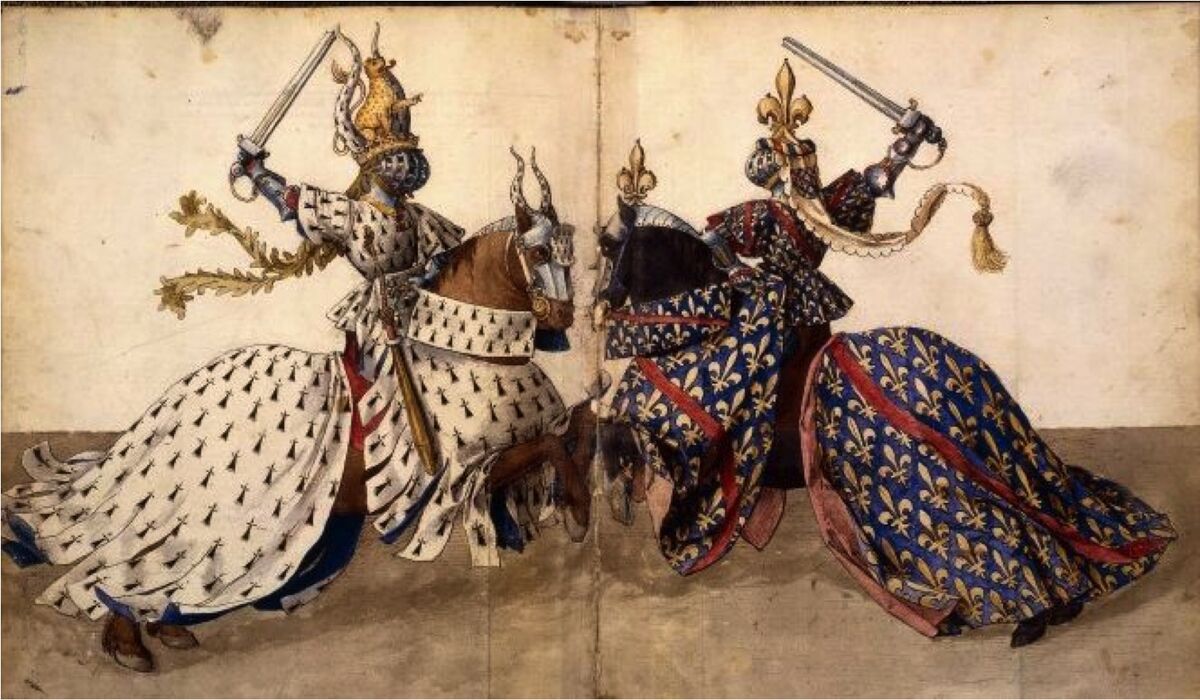
During the High Middle Ages, knighthood developed considerably, becoming a military order very close to the Church. Knights pledged to serve goodness, justice and honour. It is from this period that the stories of King Arthur are drawn.
The new hierarchy introduced by the feudal system completely changed the way society was organised.
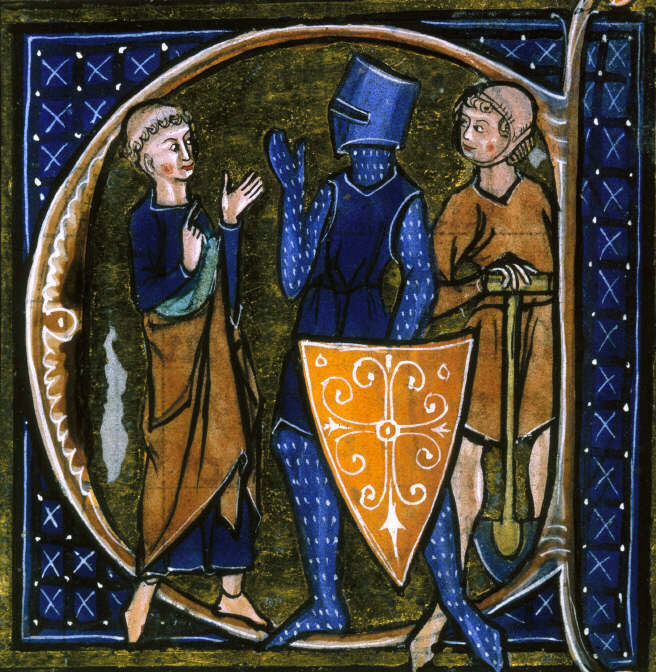
Each social order was identified by its clothing and hairstyle. The three social orders were established in the Middle Ages. Officially, they were named and described by a monk in the 11th century, although they describe society in the High Middle Ages very well. This hierarchy, divided according to people's closeness to God, was still in place at the start of the French Revolution.
Those who devoted their lives to God and prayer deserved the highest rank. Servants of God and vested with divine power on earth, the clergy included all levels of the ecclesiastical hierarchy: bishops, parish priests and monks. The early Middle Ages were also characterised by the beginnings and expansion of monastic life. Governed by a strict papal edict, the monks' lives revolved around prayer, religious chant, the study of sacred texts and manual labour. Many of them copied manuscripts.
For a long time, monks and the clergy were the sole repositories of ancient culture. It was these people who contributed to the development of a new definition of Western culture based on Christianity or Christendom. The Church thus regained control of spiritual life by imposing a Manichean vision of the world opposing God and the Devil.
Those who fight form the second section of society. Although they did not devote their lives to God, they nevertheless deserved a place of distinction because of their involvement in power and warfare, and also because of their duty to protect. The nobles were kings, lords, vassals and knights.
Those who worked, although representing almost the entire population, were called the Third Estate. This category was made up of the commoners or the people: peasants, artisans, merchants and workers. At the time, working the land was considered degrading. Members of the Third Estate did not have the leisure to devote their lives to noble causes; they were more concerned with ensuring their survival and providing for their basic needs.
A new feature of medieval farming practices, the three-year cropping system involved a three-year rotation of land, with each field following the following pattern: one year of cereals, one year of vegetables and one year of fallow land. Fallow land was already practised in Antiquity. However, the rotation was every two years: one year of planting and one year of fallow land. The three-year cropping systems improved the fertility of the land and increased production by almost 50%.
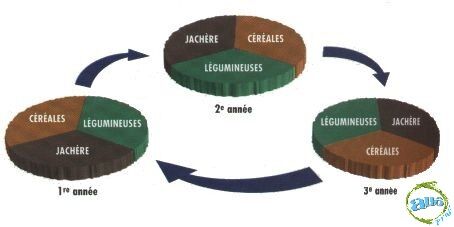
Note: image in English coming soon
From the Renaissance onwards, intellectuals promoted the idea that the Middle Ages were a time of no innovation or invention. However, during the ten centuries of the Middle Ages, there were some significant inventions, especially in the agricultural sector, which made life easier for peasants.
In addition to the three-year rotation of land, which enabled peasants to increase their production by 50% and sell any surplus, a number of tools were also developed to facilitate the many stages involved in cultivating the land. Metal implements replaced wooden tools, a new plough was designed that was better suited to the wet soils of the north of the continent, and horse-drawn teams became more efficient (allowing horses to be used for ploughing).
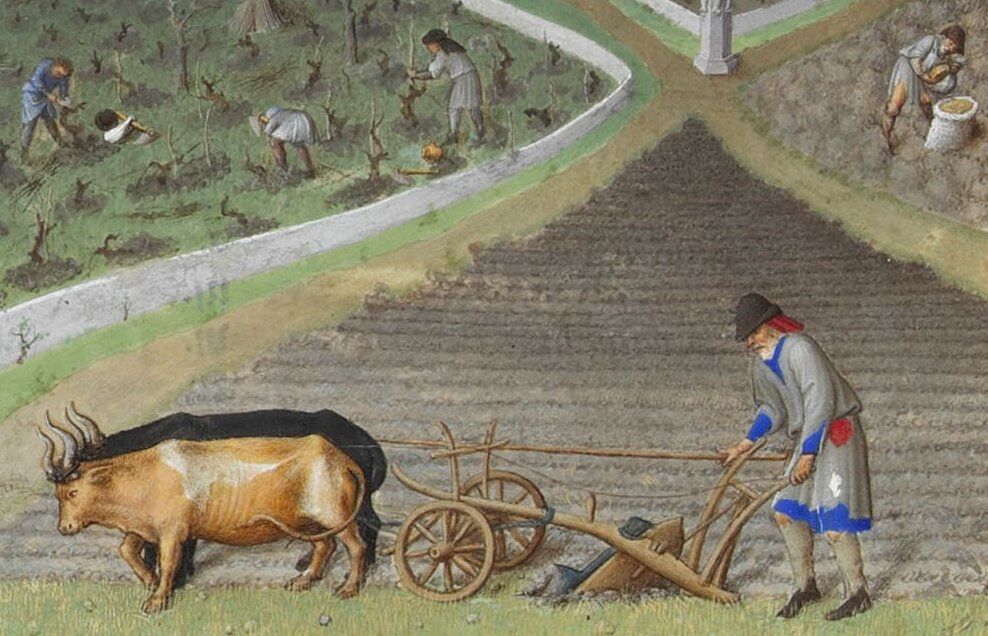
The water mill was not invented in the Middle Ages, but it was rediscovered and reused at that time. The waterwheel in the mill was used to recuperate the energy of the water in order to accomplish several types of task, such as pumping water to irrigate land, making wire and grinding cereals. It was also in the Middle Ages that people learned to transform circular motion into rectilinear motion. This energy could be used in foundries and workshops where metal and wood were worked.
Water mills were not the only type of mill used during this period: windmills were also developed and used.
Many of the inventions of the late Middle Ages facilitated the innovations of the Renaissance. For example, in the field of navigation, the invention of the compass and the triangular Latin sail made possible the maritime explorations of the 15th and 16th centuries. In other sectors, the most important inventions were eyeglasses (13th century) and xylography.
Xylography is a process by which an image can be reproduced. An engraved wooden imprint is used to reproduce an image or drawing on fabric, paper, etc. The advantage of this process is that it is faster than the handmade reproductions made by the copyist monks.
